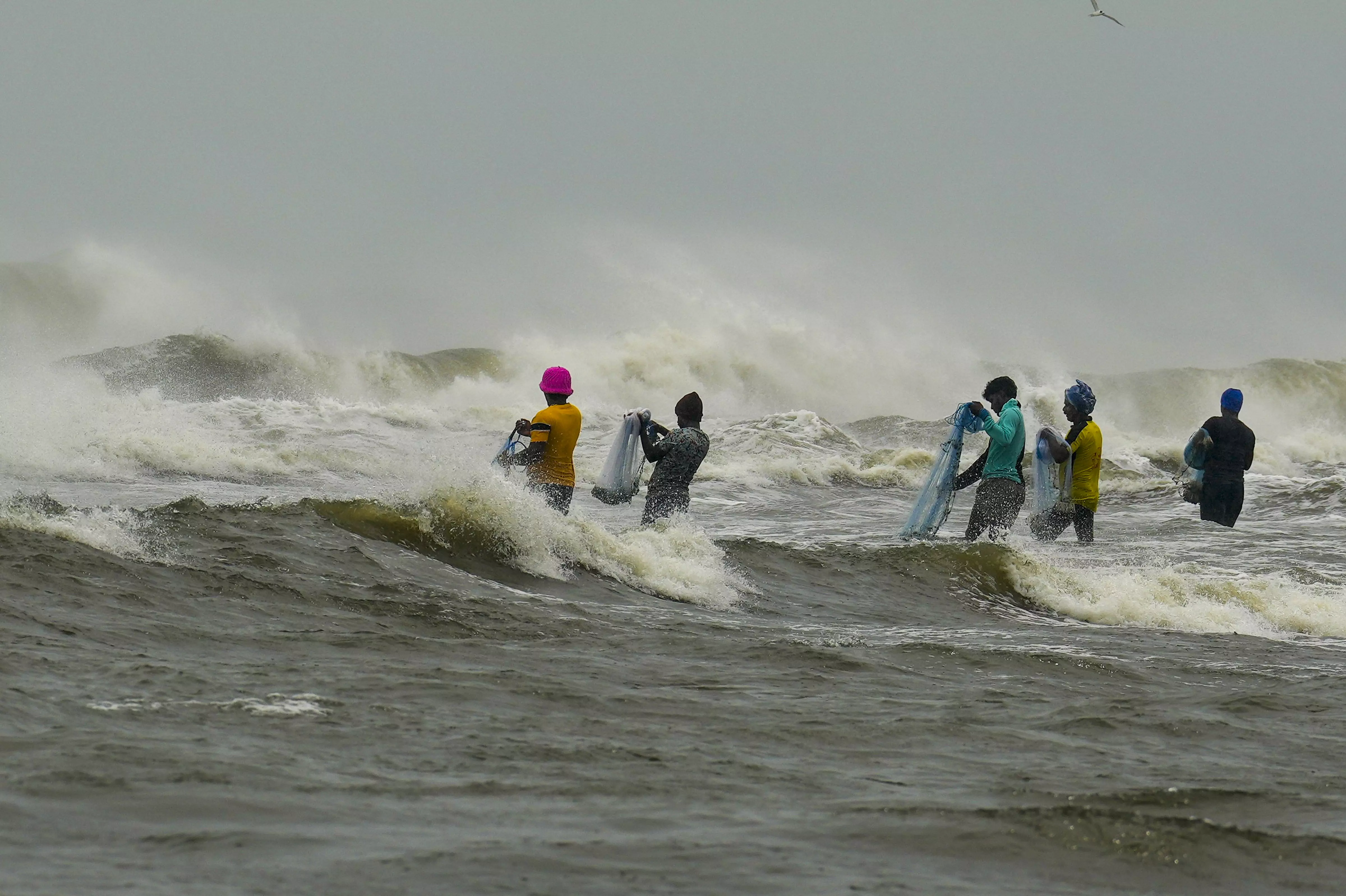
Fengal | Level 7 alert issued for Chennai: What are cyclone warning signals?
IMD has issued a Level 7 warning for Chennai; what are cyclone warning systems? What does the different levels in the system mean?

Chennai is on high alert as a severe cyclonic storm Fengal intensifying over the Bay of Bengal, heads toward the Tamil Nadu coast.
Cyclone Fengal, with sustained winds of 95 km/h, is moving north-northwest and is expected to make landfall between Karaikal and Mahabalipuram this evening.
Chennai and neighbouring districts are experiencing intermittent rains, which are forecasted to intensify alongside strong winds.
The India Meteorological Department (IMD) has issued a Level 7 warning for Chennai, which indicates the extent of the cyclone's potential to directly impact the area with significant consequences.
So, what are cyclone warning systems? What does the different levels in the system mean?
Also watch: Cyclone Fengal moves towards coastline, heavy rains in Tamil Nadu, Puducherry
What are cyclone warning systems?
Cyclone warning systems are a critical safety mechanism, which have been operational in India since the late 19th century. It has been a hallmark of India’s maritime safety since 1865 and plays a vital role in mitigating potential damage and helps to plan out a coordinated action.
Where are they found?
Cyclone warning signals are visual storm warning signals or signage permanently hoisted at the mast of ports to alert ships of the weather conditions in the ports they approach.
When were cyclone warning systems established in India?
After back-to-back devastating storms struck Kolkata and Machilipatnam in 1864, the government established a cyclone warning system in 1865, with Kolkata becoming the first port to implement a storm warning system.
What is the signal warning system India uses?
India now uses a robust and elaborate signal system. It has levels ranging from 1 to 11, to warn vessels of impending cyclones. While certain countries hoist flags, India also uses distinct signs for day and night.
Day signals are a combination of cylinders and cones, while night signals are red and white lamps.
How many time does IMD send this information?
The IMD sends information periodically to ports: usually four times a day, and once every three hours in case of a cyclone.
Also read: Cyclone Fengal: Tamil Nadu, Puducherry brace for very heavy rain
What does signal 1 signify?
Signal 1 means there is a low-pressure far at sea with surface winds up to 60 km/h. This signal means the port is not affected but warns of slightly higher wind speed.
Which level signifies the maximum danger?
Signal 7 mean the cyclone is expected to cross over or near the port. As per the IMD, the Level 7 alert signifies significant danger to the port, with surface winds expected between 90-120 km/h. Heavy rainfall is likely to cause localised flooding in low-lying areas.
Warnings are also given to fishermen to avoid venturing into the sea like the IMD has done due to the approaching Fengal.
Which signals indicate bad weather at the port?
Signal 3 indicates that a depression has formed and could affect the port. With surface winds likely to blow between 40-50 kmph, the port is likely to experience squalls.
While Signal 4 too indicates that a deep depression has formed at sea and is likely to affect the port later. The surface winds are expected to be around approx. 50-60 kmph) and signal four indicates possible danger to ships stationed at the port. Signals 3 and 4 indicates bad weather at the port.
Which signals indicate danger to the port?
Signal 5: This signal means the deep depression has transformed into a cyclonic storm and is likely to cross coast keeping port to its left. Surface winds are likely to be about 60-80 kmph. Signal 6 is similar to signal 5 but the cyclone is likely to cross coast keeping port to its right.
Signal 7: A signal 7 means the cyclone is likely to cross coast over or near the port. Signals 5, 6 and 7 indicate danger to the port.
What is the signal warning ships leaving the port?
Signal 2: A depression has formed far at sea with surface winds upto about 60-90 kmph. This signal is a warning for ships leaving the port.
What is a very danger warning
Signal 8, 9 and 10 are ‘very danger’ warnings.
Signal 8 means the cyclone is now a severe or very severe cyclone and is expected to move keeping the port to its left. Surface winds are likely between approx. 90-120 kmph.
Signal 9, which is also a ‘very danger’ warning, means the cyclone is now a severe or very severe cyclone and is expected to move keeping the port to its right.
Signal 10, another ‘very danger’ warning means it is a very severe cyclone and is expected to cross over or near the port. Wind speed will be 120-220 km/h super cyclone and above over 220 kmph and more
What does signal 11 signify?
This means all communications have failed with the cyclone warning office.
(The content above has been generated using a fine-tuned AI model. To ensure accuracy, quality, and editorial integrity, we employ a Human-In-The-Loop (HITL) process. While AI assists in creating the initial draft, our experienced editorial team carefully reviews, edits, and refines the content before publication. At The Federal, we combine the efficiency of AI with the expertise of human editors to deliver reliable and insightful journalism.)

